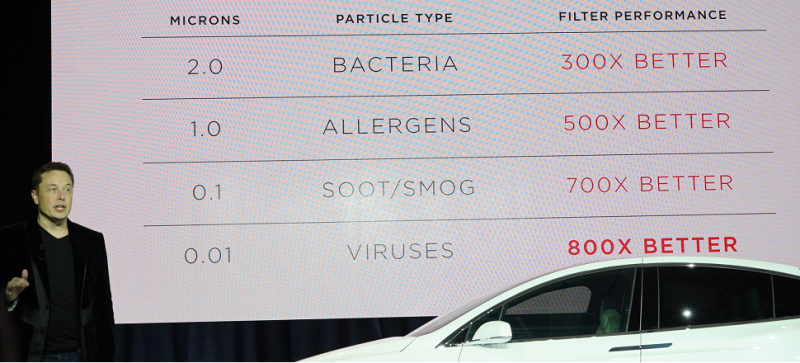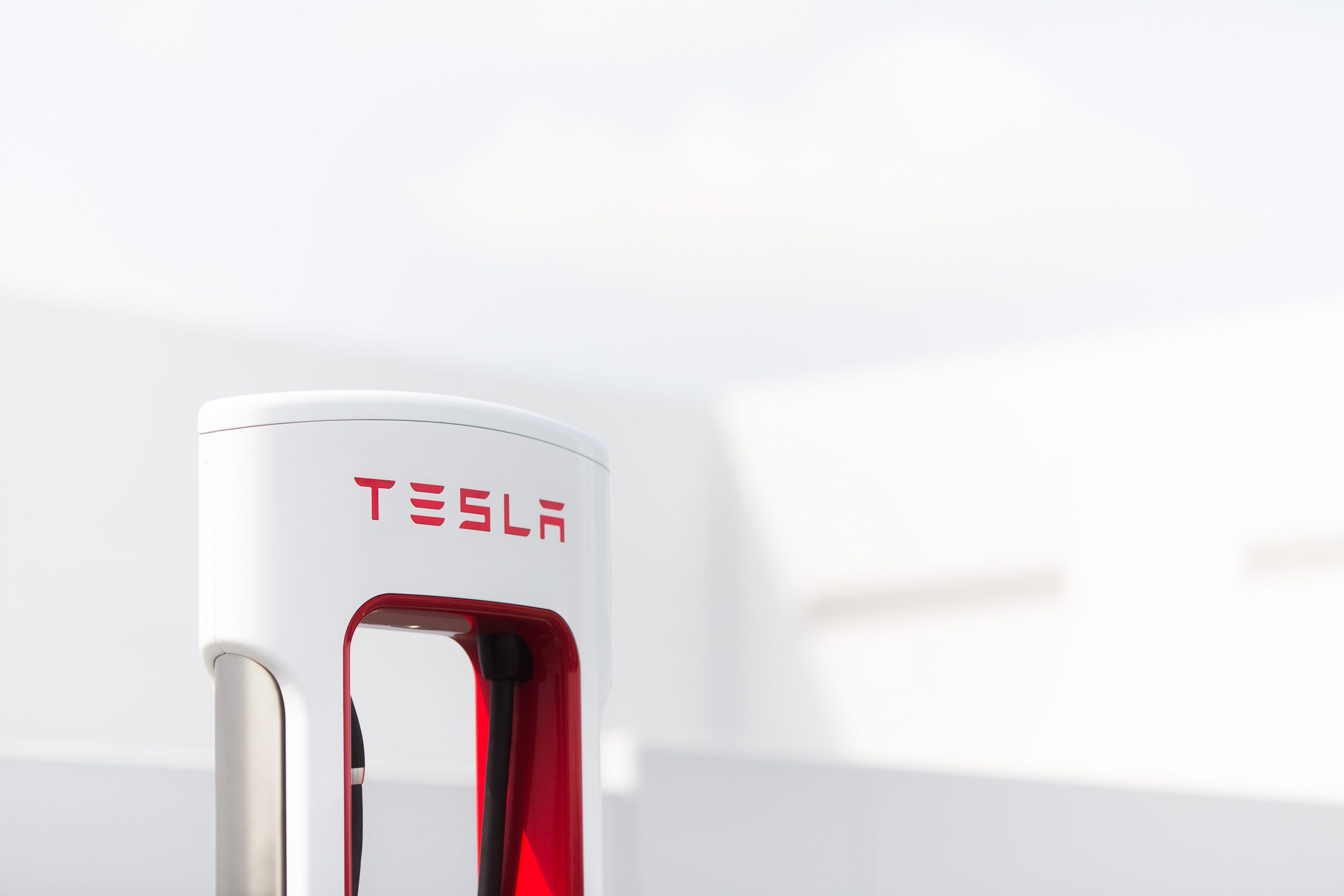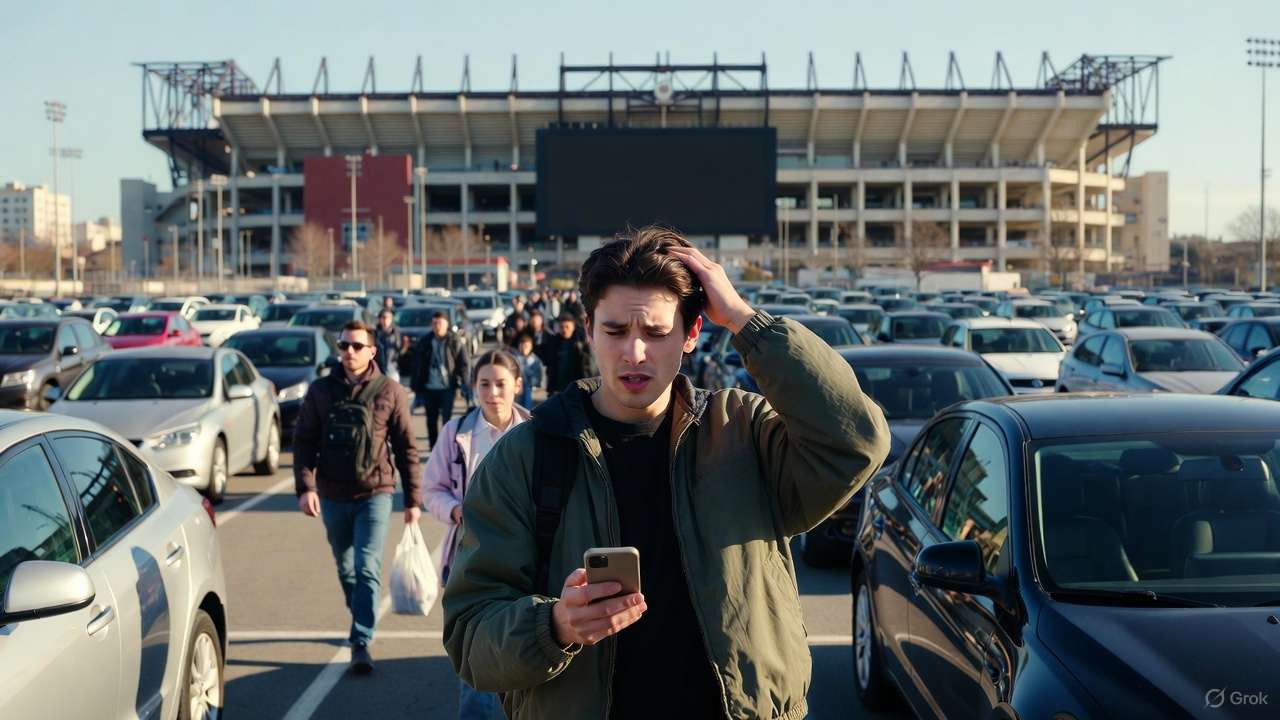News
Science Experts Question Tesla Bioweapons Defense Claims
Some scientists quibble about claims that the Tesla Bioweapons Defense Mode can protect passengers from viruses. But all agree it is an excellent system.

Make no mistake about it, the climate control system for the Model X is superior to anything available from any other manufacturer and will do an excellent job of protecting its occupants from harmful elements in the atmosphere. Tesla describes the system this way, “The biodefense button is designed to allow clean medical-grade air into the cabin and keep contaminated air out. When deployed, it pushes the system into full fresh mode, pulling all HVAC air through the HEPA filter. The fan goes to max speed 11, pulling in enough air to slightly pressurize the cabin, keeping other air from entering Model X.”
But a few people with actual bioweapons experience quibble with the Tesla Bioweapons Defense Mode claims. The issue is not whether the system works, but whether its claims regarding viruses are accurate.
Colonel Randall Larsen, retired from the U.S. Air Force and now the director of the Institute for Homeland Security, tells Gizmodo that he is actually a Tesla fan. “I’m actually building a new house, and I had them put an electrical charger in the garage, just in case I buy a Tesla,” he says. But when told about the Tesla Model X “bioweapon defense mode” he laughed out loud and asked, “So, is Musk actually advertising this?”
To be considered a real HEPA filter, an air filter has to remove 99.97% of 0.3 micrometer particles from the air. That’s fine enough to catch bacteria like anthrax. It will also stop the plague and most other bacteria, as well as most pollen, dust, and fungal spores. “Now, if you’re worried about bacterial agents like anthrax or plague, a good filtering system would probably protect you,” says Larsen.
But viruses are much smaller than bacteria, which means they’re harder to filter out of the air. “Well, 0.3 micrometer won’t hold back viruses. It will hold back most bacteria, but it won’t hold back viruses. So, if you believe that all bio-terrorist agents are bacteria, then you’ll get an increment of protection,” said Michael J. Buchmeier, deputy director of the Pacific Southwest Regional Center for Biodefense and Emerging Diseases at the University of California, Irvine.
The influenza A virus is only 120 nanometers wide, so it can pass through even a 0.2 micrometer HEPA filter without a problem. “It’s a statistical game that we play,” said Buchmeier. “Any filter like that is going to be efficient to a degree but it’s not necessarily 100% efficient.”
Larsen and Buchmeier also point out that, by the time the passengers realize there has been a bioweapons attack, it will probably be too late to take protective action. “The key problem with the bio is knowing when it’s been released,” Buchmeier says. “You know, it’s not like there’s a big bang or something. It’s a pretty extravagant long shot anyway, you know, the idea that you’re going to be forewarned enough to implement this filter in time to prevent any exposure.”
None of which should take away from how good the Model X climate control system is at protecting its passengers. It can filter out allergens like ragweed and cedar pollen, fungal spores like the ones that cause Valley Fever, and irritants like smoke and dust. It could also filter out unpleasant roadside odor. “There are a lot of reasons why you would put a filter like that in, and only one of them is bioterrorism,” says Buchmeier.

Investor's Corner
SpaceX IPO is coming, CEO Elon Musk confirms
However, it appears Musk is ready for SpaceX to go public, as Ars Technica Senior Space Editor Eric Berger wrote an op-ed that indicated he thought SpaceX would go public soon. Musk replied, basically confirming it.

Elon Musk confirmed through a post on X that a SpaceX initial public offering (IPO) is on the way after hinting at it several times earlier this year.
It also comes one day after Bloomberg reported that SpaceX was aiming for a valuation of $1.5 trillion, adding that it wanted to raise $30 billion.
Musk has been transparent for most of the year that he wanted to try to figure out a way to get Tesla shareholders to invest in SpaceX, giving them access to the stock.
He has also recognized the issues of having a public stock, like litigation exposure, quarterly reporting pressures, and other inconveniences.
However, it appears Musk is ready for SpaceX to go public, as Ars Technica Senior Space Editor Eric Berger wrote an op-ed that indicated he thought SpaceX would go public soon.
Musk replied, basically confirming it:
As usual, Eric is accurate
— Elon Musk (@elonmusk) December 10, 2025
Berger believes the IPO would help support the need for $30 billion or more in capital needed to fund AI integration projects, such as space-based data centers and lunar satellite factories. Musk confirmed recently that SpaceX “will be doing” data centers in orbit.
AI appears to be a “key part” of SpaceX getting to Musk, Berger also wrote. When writing about whether or not Optimus is a viable project and product for the company, he says that none of that matters. Musk thinks it is, and that’s all that matters.
It seems like Musk has certainly mulled something this big for a very long time, and the idea of taking SpaceX public is not just likely; it is necessary for the company to get to Mars.
The details of when SpaceX will finally hit that public status are not known. Many of the reports that came out over the past few days indicate it would happen in 2026, so sooner rather than later.
But there are a lot of things on Musk’s plate early next year, especially with Cybercab production, the potential launch of Unsupervised Full Self-Driving, and the Roadster unveiling, all planned for Q1.
News
Tesla adds 15th automaker to Supercharger access in 2025

Tesla has added the 15th automaker to the growing list of companies whose EVs can utilize the Supercharger Network this year, as BMW is the latest company to gain access to the largest charging infrastructure in the world.
BMW became the 15th company in 2025 to gain Tesla Supercharger access, after the company confirmed to its EV owners that they could use any of the more than 25,000 Supercharging stalls in North America.
Welcome @BMW owners.
Download the Tesla app to charge → https://t.co/vnu0NHA7Ab
— Tesla Charging (@TeslaCharging) December 10, 2025
Newer BMW all-electric cars, like the i4, i5, i7, and iX, are able to utilize Tesla’s V3 and V4 Superchargers. These are the exact model years, via the BMW Blog:
- i4: 2022-2026 model years
- i5: 2024-2025 model years
- 2026 i5 (eDrive40 and xDrive40) after software update in Spring 2026
- i7: 2023-2026 model years
- iX: 2022-2025 model years
- 2026 iX (all versions) after software update in Spring 2026
With the expansion of the companies that gained access in 2025 to the Tesla Supercharger Network, a vast majority of non-Tesla EVs are able to use the charging stalls to gain range in their cars.
So far in 2025, Tesla has enabled Supercharger access to:
- Audi
- BMW
- Genesis
- Honda
- Hyundai
- Jaguar Land Rover
- Kia
- Lucid
- Mercedes-Benz
- Nissan
- Polestar
- Subaru
- Toyota
- Volkswagen
- Volvo
Drivers with BMW EVs who wish to charge at Tesla Superchargers must use an NACS-to-CCS1 adapter. In Q2 2026, BMW plans to release its official adapter, but there are third-party options available in the meantime.
They will also have to use the Tesla App to enable Supercharging access to determine rates and availability. It is a relatively seamless process.
News
Tesla adds new feature that will be great for crowded parking situations
This is the most recent iteration of the app and was priming owners for the slowly-released Holiday Update.

Tesla has added a new feature that will be great for crowded parking lots, congested parking garages, or other confusing times when you cannot seem to pinpoint where your car went.
Tesla has added a new Vehicle Locator feature to the Tesla App with App Update v4.51.5.
This is the most recent iteration of the app and was priming owners for the slowly-released Holiday Update.
While there are several new features, which we will reveal later in this article, perhaps one of the coolest is that of the Vehicle Locator, which will now point you in the direction of your car using a directional arrow on the home screen. This is similar to what Apple uses to find devices:
Interesting. The location arrow in the Tesla app now points to your car when you’re nearby. pic.twitter.com/b0yjmwwzxN
— Whole Mars Catalog (@wholemars) December 7, 2025
In real time, the arrow gives an accurate depiction of which direction you should walk in to find your car. This seems extremely helpful in large parking lots or unfamiliar shopping centers.
Getting to your car after a sporting event is an event all in itself; this feature will undoubtedly help with it:
The nice little touch that Tesla have put in the app – continuous tracking of your vehicle location relative to you.
There’s people reporting dizziness testing this.
To those I say… try spinning your phone instead. 😉 pic.twitter.com/BAYmJ3mzzD
— Some UK Tesla Guy (UnSupervised…) (@SomeUKTeslaGuy) December 8, 2025
Tesla’s previous app versions revealed the address at which you could locate your car, which was great if you parked on the street in a city setting. It was also possible to use the map within the app to locate your car.
However, this new feature gives a more definitive location for your car and helps with the navigation to it, instead of potentially walking randomly.
It also reveals the distance you are from your car, which is a big plus.
Along with this new addition, Tesla added Photobooth features, Dog Mode Live Activity, Custom Wraps and Tints for Colorizer, and Dashcam Clip details.
🚨 Tesla App v4.51.5 looks to be preparing for the Holiday Update pic.twitter.com/ztts8poV82
— TESLARATI (@Teslarati) December 8, 2025
All in all, this App update was pretty robust.









